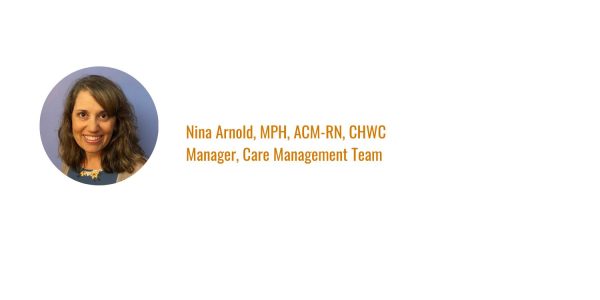By: Nina Arnold, MPH, ACM-RN, CHWC
Manager, Care Management

The COVID-19 Pandemic and its aftermath, including a decline in the number of physicians working full-time, staff departures, and shortages have made access to healthcare providers more difficult. An unintended consequence of this and other factors is that people are more frequently going to the hospital for low-acuity care. According to the Connecticut Office of Health Strategy’s (CT OHS) fiscal report 2016-2021, in 2021 over 1.3 million Connecticut residents, or over one-third of Connecticut’s population size, had ended up at the Emergency Department. Thousands of the same patients went to the Emergency Department multiple times in that year, using the Emergency Department as much as 11 times per year.
Interestingly, the CT OHS report identified 33 percent, or a third, of these cases as being potentially avoidable, meaning patients could have avoided going to the hospital by getting the treatment and care they needed through their Primary Care Provider, or by going to an Urgent Care Center. Taken a step further, a significant proportion of the cases could have been prevented all together as they related to alcohol or drug misuse, chronic pain, or common infections and viruses. Only 12 percent were actual emergencies and not preventable or avoidable.
The costs related to avoidable hospitalizations can be reduced with increased primary care visits. The Primary Care Collaborative 2019 Report found nationally “an association between increased primary care spend and fewer emergency department visits, total hospitalizations, and hospitalizations for ambulatory care-sensitive conditions.” Ambulatory care-sensitive conditions (ACSCs) are health conditions for which appropriate primary care intervention could prevent hospital admission.
As an accountable care organization focused on value-based care, the population health team at SoNE HEALTH works with member providers and patients to coordinate and care manage avoidable hospitalizations and optimize health outcomes. Through an evidence-based predictive risk stratification tool, our team identifies people who are at high risk for future health care related events and then outreaches to those patients to reinforce the provider’s advised plan of care and empowers patients to create achievable steps in meeting plan of care goals, closing additional gaps in care found along the way.
Together we can make a resolution for 2025 to reduce avoidable hospitalizations, improve patient care outcomes and reduce unnecessary costs. Call our Population Health Careline at 866-534-4638 to make a referral.
